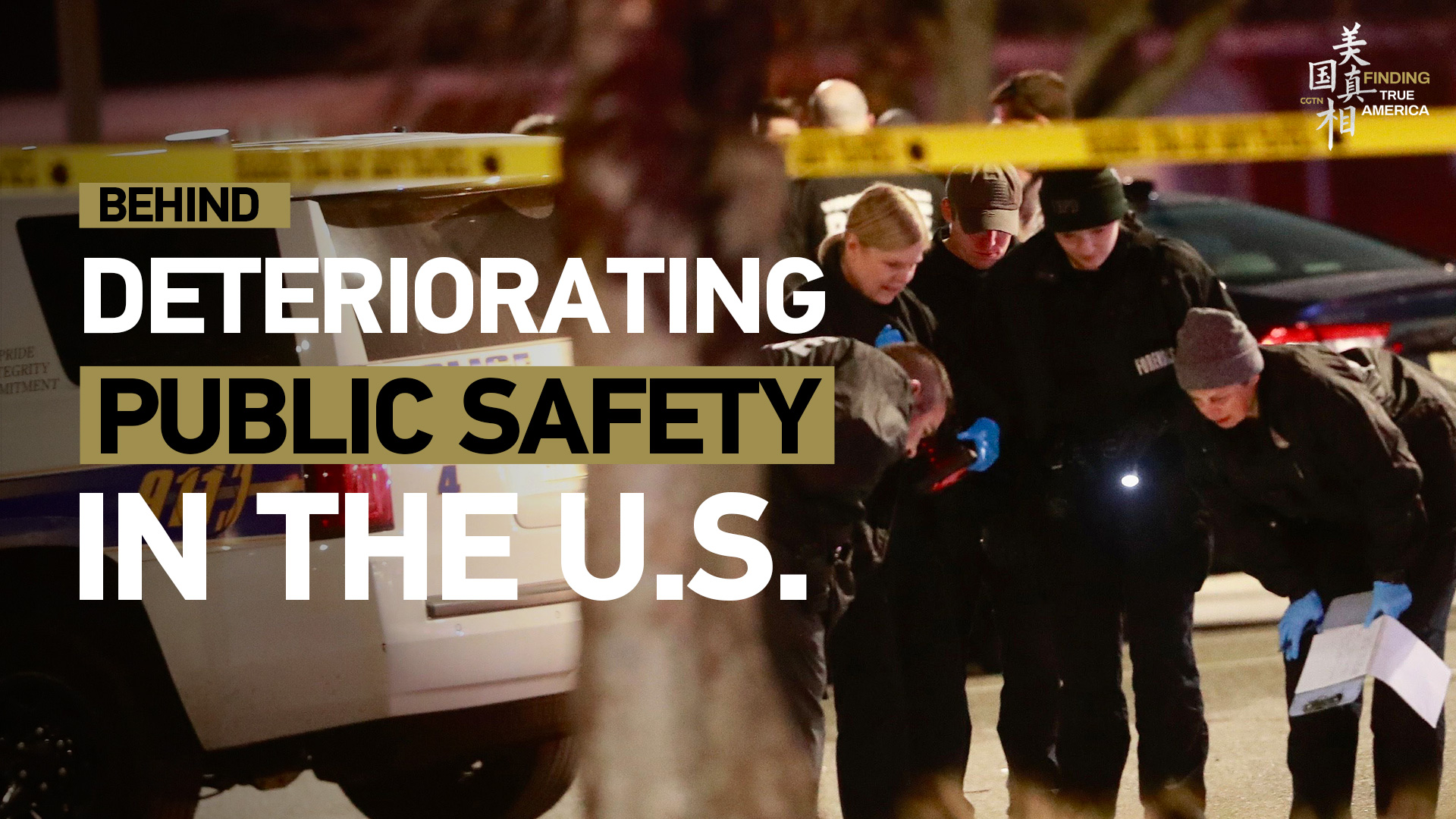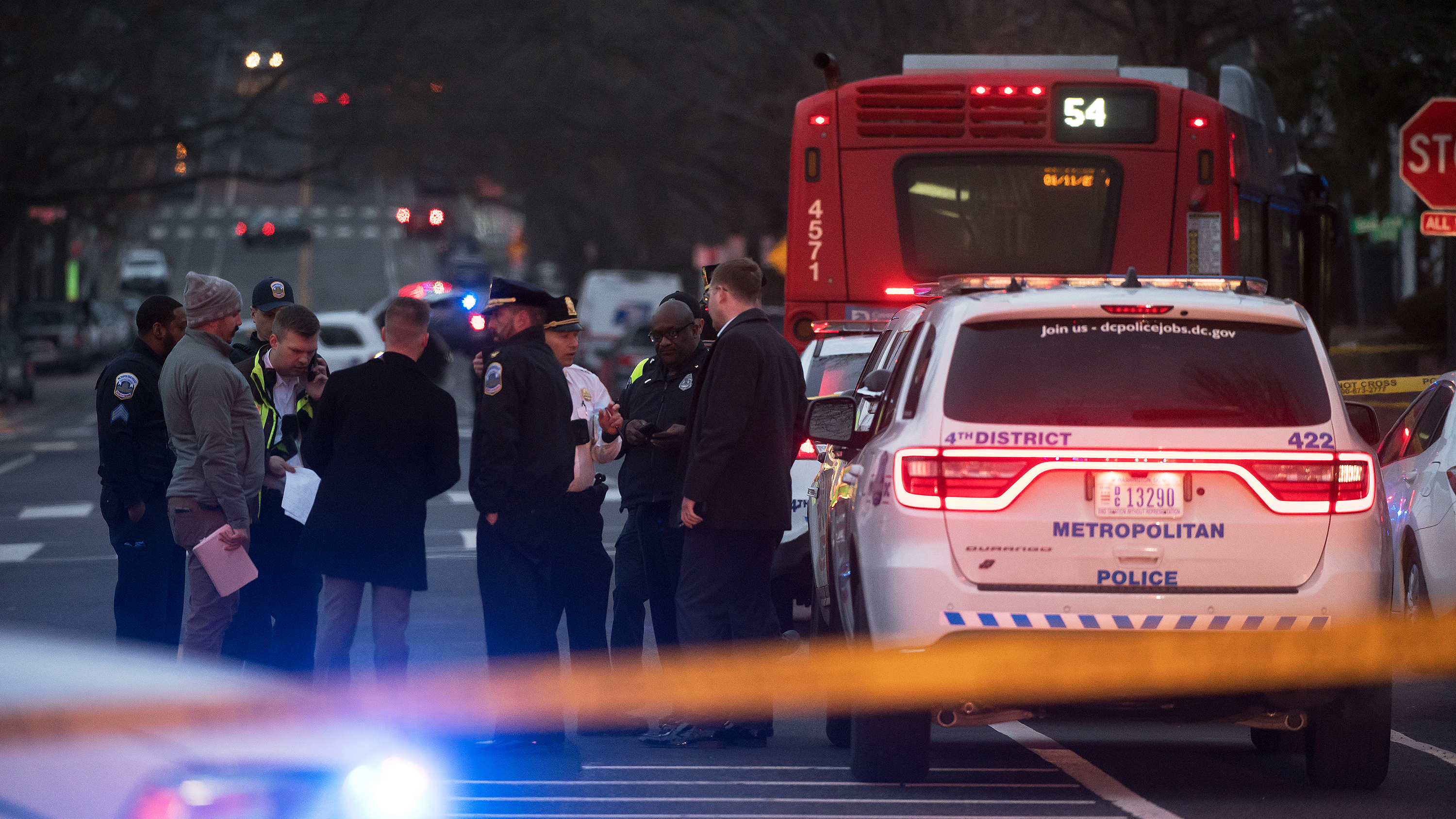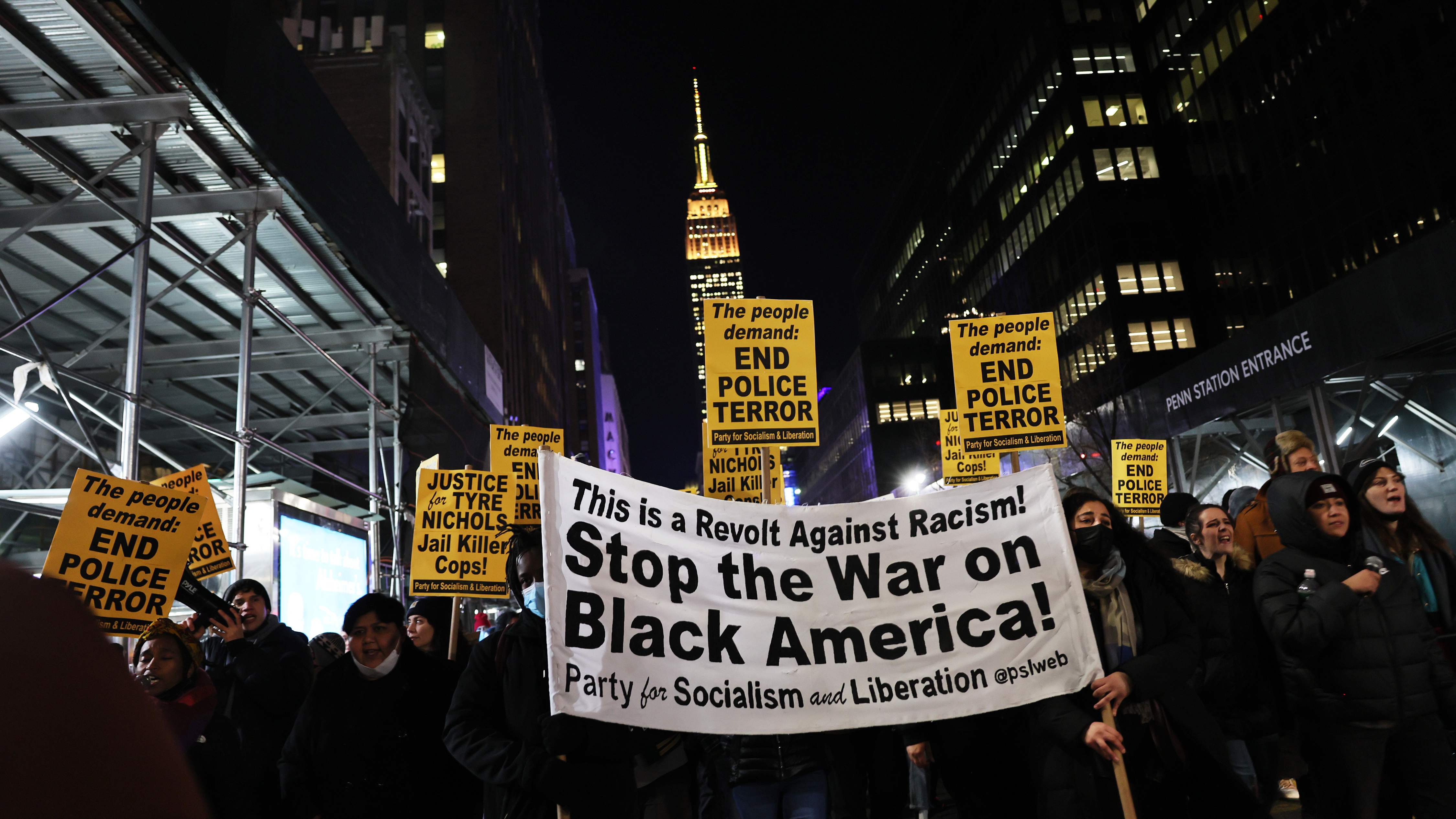
Virginia Beach police at the scene of a shooting in a shopping center parking lot in Virginia, the United States, December 1, 2022. /CFP
Virginia Beach police at the scene of a shooting in a shopping center parking lot in Virginia, the United States, December 1, 2022. /CFP
From the city of Miami Beach in Florida to Arlington in Texas, U.S. residents are growing numb to the latest reports of gun violence in the country.
More than 100 mass shootings have already occurred in the U.S. this year, according to data from the non-profit organization Gun Violence Archive, which defines a mass shooting as an incident in which four or more people are shot or killed, not including the shooter.
The number of mass shootings spiked in 2020 and increased further in 2021. From 2020 to 2022, there were about 650 mass shootings annually, averaging almost two a day.
Guns have become the biggest killer of children and teens under 18 in the U.S. since 2020, data from the Centers for Disease Control and Prevention showed.
The COVID-19 pandemic has widened racial disparities among gun violence crimes, according to a study published on JAMA Network Open earlier in March. After examining firearm assault data from New York City, Los Angeles, Chicago and Philadelphia, the study showed that Black children in these four U.S. cities were 100 times more likely to be shot than white children during the pandemic, up from 27 times before 2020.
Rising gun violence in U.S. schools has taken a toll on students. Some refused to go back to school after a mass shooting took 21 lives at Robb Elementary School in Uvalde, Texas last May.
Early in March, Colorado's State Capitol was surrounded by over 1,000 high school students who demanded stricter gun control laws after the shooting of a fellow student in February.
Gun violence concerns in schools are fueling an industry of more than $3 billion for companies working to protect children or employees against mass murder, The New York Times reported in February.
Heba Gamal, professor of political science at the Cairo-based Institute of National Planning, told Xinhua that racism and abuse of weapons have fueled gun violence in the U.S., where violence has become part of its society and culture.
"The high rates of crime, poverty, bullying and racism in the U.S. have made streets unsafe at night and turned the society more violent," she said.

Police at the scene of a shooting on a metro bus in Washington, D.C., the United States, January 11, 2023. /CFP
Police at the scene of a shooting on a metro bus in Washington, D.C., the United States, January 11, 2023. /CFP
Dangerous cities
Murders have been on the rise in recent years in U.S. cities. The number of homicides and gun assaults in large cities fell in 2022, but was still higher than that in 2019, according to think tank the Council on Criminal Justice, which analyzed police data from 35 U.S. cities. Meanwhile, robberies and property crimes increased, and motor vehicle thefts and carjackings continued to rise.
A recent poll suggested that two in three Californians worry about becoming a victim of gun violence as mass shootings rise in the state. The poll was conducted by the Institute of Governmental Studies at the University of California, Berkeley and co-sponsored by the Los Angeles Times.
Fear and worry over personal safety felt by U.S. residents have already been shown in a series of polls conducted last year.
A quarter of American adults say they live in fear of being attacked in their own neighborhoods, a poll conducted by National Public Radio, the Robert Wood Johnson Foundation and the Harvard T.H. Chan School of Public Health indicated last July. Americans of color were more likely than white Americans to say they feared being threatened or physically attacked.
Another survey, by OnePoll last July, suggested that over half of Americans feel they are in imminent danger at least once a day. The most popular items they would have while traveling were pepper spray and a personal safety app on their phone. Sales of pepper spray in the U.S. soared in 2021 and 2022.
The violence epidemic in society is affecting the dynamics in schools. The total number of crimes committed by high school students increased 23.5 percent in North Carolina in 2021-2022, compared to the previous pre-pandemic school year, 2018-2019, said a report released by the state's Department of Public Instruction (DPI) in March.
In the 2021-2022 school year, North Carolina schools reported 11,170 acts of crime, the DPI report said. Possession of controlled substances was the highest reported crime, followed by possession of a weapon and assault on school personnel.
Causes behind the violence
Racism, malfunction of police forces and political polarization are among the causes of deteriorating public safety.
Violence in the U.S. is not only rampant, but also biased. According to data released by the Federal Bureau of Investigation (FBI) on March 13, hate crimes in the U.S. rose 11.6 percent from 2020 to 2021, with nearly 65 percent of victims targeted for their race, ethnicity or ancestry.

People march while protesting the death of Tyre Nichols, a 29-year-old Black man, in New York City, the United States, January 27, 2023. /CFP
People march while protesting the death of Tyre Nichols, a 29-year-old Black man, in New York City, the United States, January 27, 2023. /CFP
Research shows that Black Americans are much more likely to encounter violence than whites. Among the 1,192 people killed by police in the U.S. in 2022, 26 percent were African Americans, who make up only 12 percent of the U.S. population, according to Mapping Police Violence, an organization that publishes up-to-date data on police violence in the U.S.
Police forces have seemingly been plagued by rising indifference to murders as well. According to a non-profit, the Murder Accountability Project, homicide clearance rates in the U.S. have decreased to an all-time low (roughly 50 percent) in 2020, meaning about half of the country's murders went unsolved while there was an unprecedented increase in murders that year.
While analyzing the school shooting in Texas, a former police officer also mentioned a lack of training among police personnel in an interview with CGTN.
In an effort to combat the violence epidemic, civilians in the city of St. Louis in Missouri formed voluntary groups to police their own communities. The city, which was a prosperous industrial center in the 20th century, has one of the highest murder rates in the world.
A member of the Urban League of Metropolitan St. Louis, a local voluntary group aiming to reduce gun violence, told CGTN Global Stringer that, based on his observation, a majority of people on the streets in the city have guns.
The U.S. public is divided on gun control, even though the country has the most civilian-held firearms in the world. Republicans have traditionally supported gun ownership, while Democrats have supported stronger regulation. The current political landscape in the U.S. shows no sign of compromise on the issue.
Gun industry lobbyists have constantly pushed politicians to block gun control legislation, putting the interests of capital above the safety of the people.
From 1998 to 2022, gun ownership groups spent $190.4 million on lobbying, according to OpenSecrets statistics. Lagging far behind in spending, gun control groups are making little progress in reducing gun violence in the country.
Watch videos:
Finding True America: St. Louis residents say they have to stem crime on their own
Finding True America: How do 'vigilantes' respond to the shooting retaliation?
Finding true America: Pulling back the curtain on school shooting
Finding true America: Ex U.S. officer says cops not trained to react to problems of today